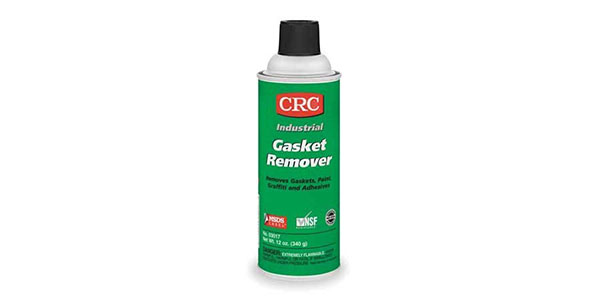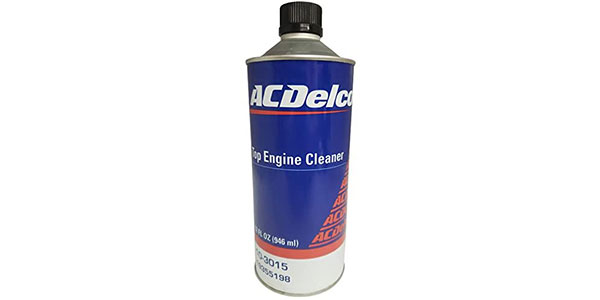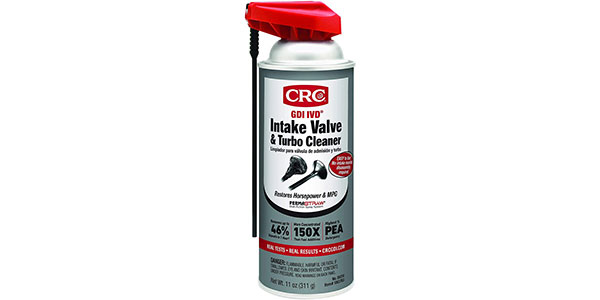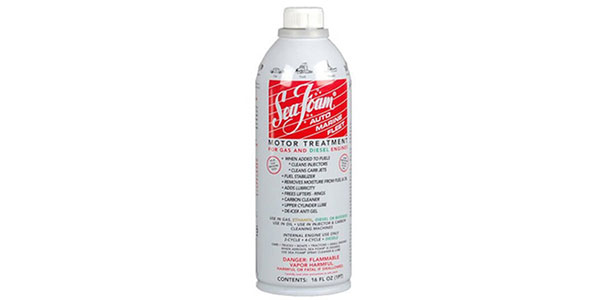How To Remove Carbon Buildup In Intake Manifold
Here's the most searched query on what dissolves carbon deposits, people from all over have shown their knowledge with various approaches and processes. Which method to adopt are quite hard for the audition, therefore must endeavor only tested method and products to avoid whatsoever harm to your car engine.
Deposits in the injectors, combustion chambers and in the fuel system are the biggest reasons why vehicles and boats lose performance over fourth dimension. These deposits rob engines and vehicles of functioning, efficiency and enhance emissions.
Deposits ordinarily class in several different areas:
- Within fuel injectors
- On the underside of valves
- On pistons and within combustion chamber cylinders
- In fuel storage tanks and fuel delivery lines (before the fuel reaches the injectors)
Depending on where the deposits occur, y'all tin can have dissimilar mechanisms for eolith formation as well equally different effects on the vehicle or engine.
Another Question is whether the carbon deposit will be dissolve using chemical/detergent without taking out engine parts?
The answer is No.. You tin break them into little pieces, but cannot be dissolve from whatever chemic formulation, still y'all tin clean them out afterwards taking it out the engine parts. so when to take it out engine parts for cleaning carbon deposit.
- You lot should endeavor this method after trying out other non-conventional methods (Beneath in detail) such as you tin use dedicated detergents for intake valve cleaner via spraying from air intake.
- Other y'all tin can clean out injectors via from injector cleaners via filling information technology out in gas storage tank.
Afterwards trying in a higher place methods, and still you lot think you are having a performance issue then you can opt for conventional method (taking out engine parts) are in detail below.
According to Experts Proposition of dissolving Carbon deposit by using detergents without removing engine parts:
Soot is the final ingredient in the hardened carbon deposits in the intake manifold and on the intake valves. Initially, the oil based deposits are soft & wet and in the GDI engine's PCV system are much more prevalent than the oil based deposits of earlier EFI engines. Information technology's well established now that GDI engines produce more soot than before gasoline engine designs. It travels into the exhaust organization and some of it is circulated back into the intake manifold by the exhaust gas re apportionment organisation.
So let's start with the tested method and Chemicals which surely make clean carbon deposit from engine components.
More Maintenance: How to Make Bootleg Car Wash Lather
How do yous make clean carbon deposits?
Conventional Method
In this method removing carbon deposits from intake valve, piston and combustion chamber cylinders is a lengthy process, you lot have to open the engine parts to clean these components which you lot can meet in below in particular how to open and close engine parts after cleaning carbon eolith.
But only removing engine parts and cleaning from sand papers with untested chemicals can damage your engine, therefore always use tested and recommended products for cleaning carbon deposit.
- Get-go you demand to Get Gasket Remover Chemical for cleaning piston and cylinder wall carbon eolith or Intake valve chemical for intake valve cleaning.
- Second e'er use recommended scouring pad otherwise information technology could harm your engine parts by having a deep scratched into it.
- Tertiary get plastic blades for removing carbon deposit after spraying and rubbing.
- Recommends the utilise of a razor bract or plastic gasket scraper to clean the gasket surface on engine components that are to be
- Reused. When cleaning gasket surfaces,
Please note the following:
- When using a razor blade type gasket scraper, apply a new razor blade for each cylinder head and respective cake surface. Concur the blade
- As parallel to the gasket surface every bit possible. This will ensure that the razor blade does non gouge or scratch the gasket surfaces.
- Practice non gouge or scrape the combustion bedroom surfaces.
- Practise not gouge or scratch any engine-sealing surface during the cleaning procedure.
- In the Concluding you can apply WD-xl for cleaning and degreasing the engine parts you cleaned, the foaming activeness sticks to the surface, quickly cutting through the grease. All you have to do is wipe it up.
Lacquer thinner & xylene is too helpful according to many consumers, just it takes rather more fourth dimension to clean and more dangerous, therefore meliorate to use the tested products, if you lot are doing at home.
Process of removing, cleaning and re-assembly procedure.
Co-ordinate to survey and consumer reviews, cleaning detergents are affective to about to 20 to 40 percent of cars used cleaning detergents, therefore first effort detergents before go for conventional method.
Remove Engine Components for Cleaning
- The first step in cleaning the cylinder head is getting access to the cylinder head. Y'all may demand to remove some other components start.
- Unhook the spark plug wire and secure it, removing whatever batteries if equipped.
- Remove the muffler, muffler guard and whatsoever other components that block access to the cylinder. If you're unsure how to remove the muffler, follow our guide.
- Cylinder caput bolts well-nigh the muffler and exhaust port may be longer. To avoid confusion, ready a template. Depict a rough outline of the cylinder caput on a piece of cardboard and dial holes for each bolt location. And then, remove the cylinder head bolts and insert them in the respective holes.
- Lift off the cylinder head. If the caput sticks, strike information technology on the side with a nylon-faced hammer. This should loosen the cylinder head enough for you to gently lift if off the engine. Notation: Do not pry off the cylinder head. This can damage the surface of the engine block or the cylinder head.
- Remove and discard the quondam head gasket.
More Maintenance: What Is the Best Oil Condiment to Stop Engine Knocking
Removing Carbon Buildup
- Identify the piston at the pinnacle dead center so that the valves are closed. And then, scrape carbon gently from the cylinder head, using a wooden or plastic scraper. Accept care not to dig the scraper into the aluminum. On stubborn deposits, utilize a putty knife, wire castor or steel wool, taking care not to bear down on the metal surfaces.
- Make clean away the remaining carbon with solvent, using fine steel wool to smooth rough spots. You lot can also soak metal parts for up to fifteen minutes to remove stubborn deposits. Scrape again, if necessary, to loosen stubborn grit. Then, clean the expanse thoroughly with the solvent and set the head aside. With the piston still at the top of the cylinder and the valves closed, apply the aforementioned method to remove carbon deposits from the piston and the cease of the cylinder.
- Plow the crankshaft to open each valve, and advisedly remove any visible carbon deposits on the valves and valve seats, using only a brass wire brush. CAUTION: Do not permit grit to fall into the valve chambers or between the piston and the cylinder wall.
- Inspect the valves and valve seats to run into if they are croaky, rough or warped. Bring damaged parts to an authorized service dealer for inspection before reassembling the head.
- Using a scraper, solvent or both, remove any remaining carbon and residuum left behind past the head gasket on the cylinder head and engine block. Clean the surfaces thoroughly earlier installing the new head gasket. Any droppings or oil left on the cylinder head or engine block may prevent a tight seal and cause eventual engine damage.
Re-assembling the Cylinder Head
- Inspect the surfaces of the engine block, cylinder head and new head gasket to be sure they are clean.
- Place the new head gasket in position on the engine block. Do not utilize sealing compounds.
- Set the cylinder head on the head gasket, adjustment the cylinder head with the gasket and the engine block.
- Remove each caput bolt from its slot in the cardboard template. Then, insert the commodities in its original location, leaving information technology loose. Insert the other bolts in the same manner. Make sure to attach any housings or brackets that are held in place by the caput bolts.
- Hand-tighten the head bolts first, without using a wrench.
- Tighten the cylinder caput bolts in increments, using a torque wrench (service part number 19393). Turn each bolt a few turns, and so proceed to the next commodities until each commodities is but snug. For concluding tightening, use a torque wrench. Proceed in increments or roughly one-third the terminal torque. Consult your small engine manual for last torque specifications
- What chemical will dissolve carbon?
More than Maintenance: How to Clean a Radiator with Blistering Soda
For Piston and Combustion Chamber
CRC Gasket Remover & ACDelco Acme Engine and Fuel Injector cleaner

CRC Gasket Remover and ACDelco are an excellent chemic formula for cleaning carbon deposit, very safe and audio.
Yous tin apply this for valve cleaner, process remain the aforementioned as shown in the video.
- Price: $xiv.51 ACDelco
For Intake Valve Cleaner
CRC GDI valve cleaner & Liqui Moly tin can exist used for conventional method as stated above or unconventional method by simply spraying from air intake valve as stated below.
Unconventional Method
Unconventional Method means you don't accept to open out all engine parts for cleaning, but to put these sprays from air intake valve hose subsequently your engine temperature reach at an optimal level.
- Utilise that spray @2500RPM until it empty, you lot will see a white smoke coming from exhaust piping, sometime it wouldn't so don't exist worry for the white smoke.
- Then take your car on a highway for well-nigh 15 to xxx minutes with above 3500 rpm.
- These method make clean your engine carbon deposit from 10 to 20 percent, so the recommended method is the conventional method for cleaning carbon deposit.
Cleaning Chemicals to remove Carbon deposit
These chemic cleaners are injected into the car's intake system and eliminate carbon deposits, yet some tin harmful to your engine and its components.
ACDelco 10-3015 Top Engine and Fuel Injector Cleaner 32 oz.

- GM upper engine and fuel injector cleaner
- Delivers immediate engine eolith cleaning
- Product has multiple service applications
- Use for in-rail fuel injector cleaning, engine intake system deposit removal, and piston superlative soaking clean-up
- Depression VOC compliant conception
Price: $xiv.51
More than Maintenance: Loftier Mileage Oil Additive
CRC 05319 GDI IVD Intake Valve & Turbo Cleaner

- Proven to clean intake valves on GDI engines and turbo systems
- Easily installed through the air intake organization
- Highest concentration PEA (Polyether Amine) detergency available
- Proven to remove up to 46% of GDI Intake Valve deposits in 1 hour
- 150X more than concentrated than fuel additives
Price: $11.05
Liqui Moly 2001 Valve Clean

Valve Cleaner is added when the Tank is Empty (when you fill it up)
What you can do is:
When tank is empty, add Valve Cleaner, fill up upward the gas and run the car till its empty again.
- Improve engine performance
- Lower fuel consumption
- Lower pollutant emissions
- Protection against corrosion and carburetor icing
Price: $8.37
Sea Foam SF-16 Motor Treatment – 16 oz

- Cleans injectors, carb jets and passageways
- Cleans and lubricates intake valves, pistons and cylinders
- Dissolves and cleans fuel residual in fuel systems
- Dissolves oil deposits in crankcase
- Clean timing chain tensioners and VVT actuators, quiet noisy lifters
- 100 percent pure petroleum
Price: $half-dozen.97
STP ULTRA Fuel System Cleaner

- Formulated to help salvage gas and lower emissions by deep cleaning the unabridged fuel system
- Formulated to assist restore peak performance and reduce friction by lubricating engine parts
- Formulated to help prevent ethanol deposits and inhibit corrosion
- Works with modern gasoline engines such as turbo, directly inject and hybrid vehicles
- Compatible with cap-less gas systems
Cost: $ix.94
Source: https://cars-care.net/what-dissolves-carbon-deposits/

0 Response to "How To Remove Carbon Buildup In Intake Manifold"
Post a Comment